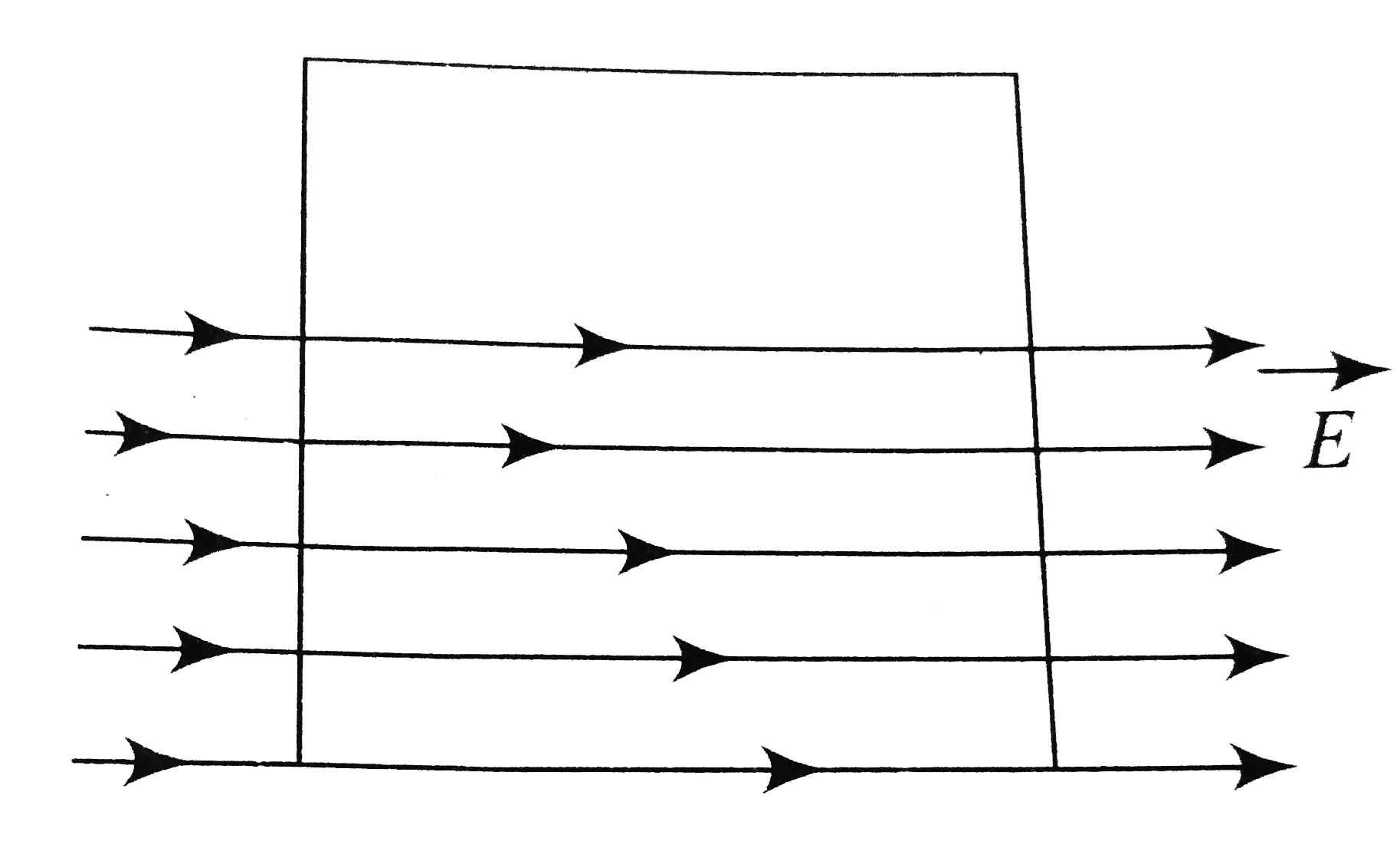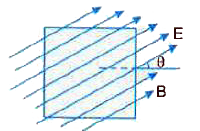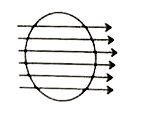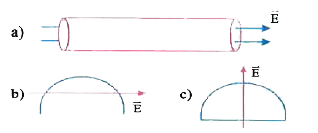A square surface of side Lm is in the plane of the paper. A uniform electric field →E(V/m), also in the plane of the paper, is limited only to the lower half of the square surface (see figure). The electric flux in SI units associated with the surface is:

Zero
EL2
EL2/(2ε0)
EL2/2
The correct Answer is:A
ϕ=0
Because no. of field line entering
= no. of field lines leaving. [θ=90∘]
Topper's Solved these Questions
- BOOK - ERRORLESSCHAPTER - ELECTROSTATICSEXERCISE - NCERT BASED QUESTIONS (Capacitance)59videos
ELECTROSTATICS
- BOOK - ERRORLESSCHAPTER - ELECTROSTATICSEXERCISE - NCERT BASED QUESTIONS (Grouping of Capacitors)58videos
ELECTROSTATICS
- BOOK - ERRORLESSCHAPTER - ELECTROSTATICSEXERCISE - NCERT BASED QUESTIONS (Electric Dipole)21videos
ELECTROSTATICS
- BOOK - ERRORLESSCHAPTER - ELECTRONICSEXERCISE - Assertion & Reason26videos
ELECTRONICS
- BOOK - ERRORLESSCHAPTER - MAGNETIC EFFECTS OF CURRENT EXERCISE - ASSERTION & REASON18videos
MAGNETIC EFFECTS OF CURRENT
Similar Questions
A uniform electric field →E=aˆi+bˆj intersects a surface of area A .What is the flux through this area if the surface lies in the yz plane?
View SolutionA square frame of edge 10 cm is placed with its ositivae normal making on angle of 600 with a uniform electric field of 20Vm−1. Find the flux of the electric field through the surface bounded by the frame.
View Solution
Knowledge Check
- Question 1 - Select One
Answer questions on the basis of your understanding of the following paragraph and the related studied concept.
Electric flux, in general , through any surface is defined as per relation:
ϕE=∫→E.→ds , where integration has to be performed over the entire surface through which flux is required. The surface under consideration may be a closed one or an open surface. When flux through a closed surface is required we use a small circular sign on the integration symbol. Thus flux over a closed surface ∮E=∮→E.→ds. it is customary to take the outward normal as positive in this case.
A German physicist Gauss established a fundamental law to find electric flux over a closed surface. As per Gauss' law , the flux of the net electric field through a closed surface equals the net charge enclosed by the surface divided by ∈0.Mathematically ∮→E.→ds=1∈0[qen] , where qcn is the net charge enclosed within the surface. It is possible to derive Gauss' law from Coulomb's laws. Gauss' law can be applied to obtain electric field at a point due to continuous charge distribution for a number of symmetric charge configurations.
A square surface of side L m is in the plane of paper. A uniform electric field →EVm−1 , also in the plane of the paper, is limited only to the lower half of the square surface as shown in adjoining figure. The electric flux, in SI units, associated with the surfer is :
(##U_LIK_SP_PHY_XII_C01_E03_012_Q01.png" width="80%">AzeroBEL2CEL22∈0DEL22 - Question 2 - Select One
A square surface of side L metre in the plane of the paper is placed in a uniform electric field E(volt/m) acting along the same place at an anlge θ with the horizontal side of the square as shown in figure. The electric flux linked to the surface in uint of V−m is
 AEL2BEL2cosθCEL2sinθD0
AEL2BEL2cosθCEL2sinθD0 - Question 3 - Select One
A square surface of side L in the plane of the paper is placed in a uniform electric field E acting along the same. Plane at an angle θ with the horizontal side of the square as shown in. The electric flux linked to the surface is
 AEL2sinθBzeroCEL2DEL2cosθ
AEL2sinθBzeroCEL2DEL2cosθ
A circular disc of radius r is placed along the plane of paper .A uniform electric field →E is also present in the plane of paper . What amount of electric flux is associated with it ?
 View Solution
View SolutionIn a uniform electric field find the total flux associated with the given surfaces (R is radius )
 View Solution
View SolutionIn a uniform electric field find the total flux associated with the given surfaces (R is radius)
 View Solution
View SolutionA uniform electric field of 500V/m is directed at 150∘ to the positive X-axis, in the X−Y plane as shown in figure
 View Solution
View SolutionA cylinder of radius R and length l is placed in a uniform electric field E parallel to the axis of the cylinder. The total flux over the curved surface of the cylinder is
View Solution

